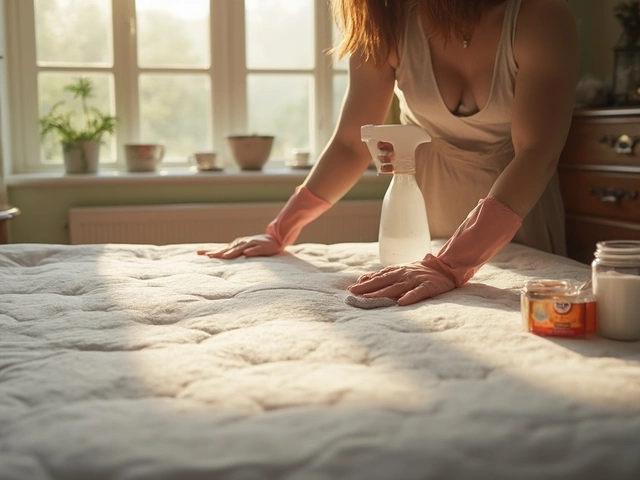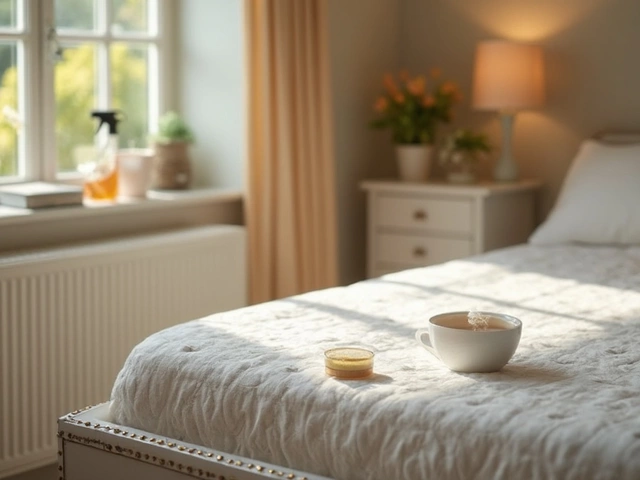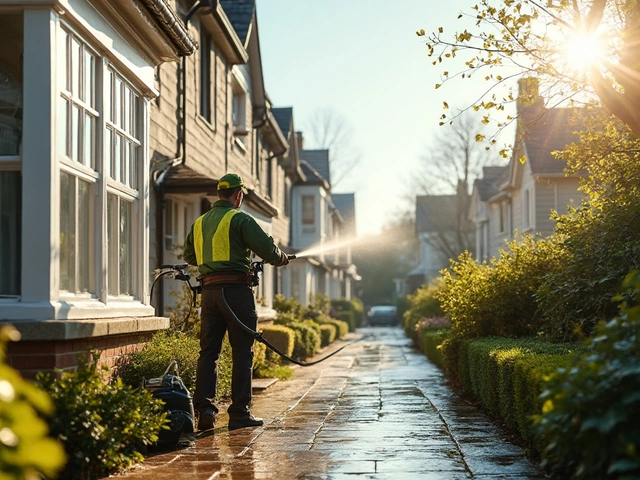Got kids, pets, or just a knack for midnight snacking in bed? Stains and weird smells on a mattress can sneak up on anyone. And that bottle of hydrogen peroxide in the bathroom cabinet looks like a cheap fix, right? But before you pour it on your bed, there’s some stuff you should know.
Hydrogen peroxide breaks down pretty fast and has this bubbly action that lifts dirt and kills a bunch of germs on contact. That’s why you see it foaming when you pour it on a cut. But mattresses aren’t skin—they have foam, fabric, and sometimes tricky dyes that handle cleaning differently. So while hydrogen peroxide can sometimes zap stains like blood or sweat, it’s also got the power to bleach or weaken certain fabrics if you’re reckless with it.
If you’re after crisp, sanitized mattress vibes without wrecking your bed, it pays to use peroxide the right way. Stick around for how to use it—without staining, fading, or voiding a warranty. No guessing, no regrets—just facts, steps, and the cleaner sleep you actually want.
- What Hydrogen Peroxide Actually Does
- Tackling Stains: What Works and What Doesn’t
- Is It Safe for All Mattresses?
- Step-by-step: How to Use Hydrogen Peroxide on Your Mattress
- Smart Tips to Keep Your Mattress Clean
What Hydrogen Peroxide Actually Does
So, what’s the deal with hydrogen peroxide when it comes to tackling stuff on your mattress? First off, it’s a simple chemical—basically water with an extra oxygen molecule. This extra oxygen is what makes it a solid cleaner and disinfectant.
When you pour hydrogen peroxide on a surface, it bubbles like crazy. That fizz comes from its reaction with organic material—think blood, sweat, or pet drool. This bubbling action helps lift away gunk you don’t want sticking around. You’re not just cleaning, you’re also killing a lot of bacteria and even some viruses. It’s why hospitals use diluted hydrogen peroxide to wipe down surfaces.
“Hydrogen peroxide is a broad-spectrum antimicrobial that can deactivate bacteria and viruses in just a few minutes,” says the CDC in its guidelines for environmental infection control.
But here’s something to keep in mind—hydrogen peroxide isn’t just a stain buster. It can act as a bleaching agent. If your mattress cover has color, or if it’s made of fragile material, you’d better test it in a hidden spot first. Some folks have learned this the hard way and ended up with light spots on their bed.
Check out how hydrogen peroxide compares to other mattress cleaning basics:
| Cleaner | Kills Germs | Lifts Stains | Bleaches Fabric |
|---|---|---|---|
| Hydrogen Peroxide | Yes | Yes (especially blood) | Yes |
| Baking Soda | No | Sort of (good for smells) | No |
| Soap & Water | No | Moderate | No |
And don’t forget—using hydrogen peroxide the right way is key. It’s a no-brainer for targeting small, specific stains. But if you want to douse the whole mattress, that’s usually overkill and risky for your fabric. The hydrogen peroxide trick is best for spot-treating tough gunk without drenching your whole bed.
Tackling Stains: What Works and What Doesn’t
If you’ve ever rolled over to a banana-sized mystery stain in the middle of your mattress, you’re not alone. But hydrogen peroxide isn’t a one-size-fits-all magic trick for every mark. Here’s what actually works—and when to skip it.
Hydrogen peroxide is fantastic for fresh protein-based stains. That means blood, sweat, and sometimes even food stains if caught early. The little bubbles you see? That’s peroxide breaking stuff apart, helping lift stains right out. For dried blood, dampen the spot first, then blot—don’t rub—using a mix of about 3% hydrogen peroxide and water. It foams up, and you just wipe it away. Easy.
- Hydrogen peroxide works best on light-colored mattresses. It can bleach or fade darker fabrics, so patch-test before you get wild.
- It fights funky smells too. For a lingering sweat smell, a quick spritz (not a soaking) neutralizes weird odors.
But here’s where things get messy: peroxide is not the hero for every stain. Ink stains, colored drinks (like grape juice), and oily stuff (pizza grease—looking at you, Damon) just laugh at peroxide. It can also leave rings or weird white spots if you dump too much or don’t dry the area properly. Memory foam is especially tricky, and some mattress tags even warn against peroxide since it can damage the foam or void warranties.
So, quick rundown: Protein stains? Yes. Smells? Yes. Colored or greasy stains? Nope. Older stains that are set-in? Only a maybe—don’t get your hopes up. When in doubt, gentle upholstery cleaner or plain soap and water may be the safer bet. Always check your mattress label for special care rules before trying anything new.
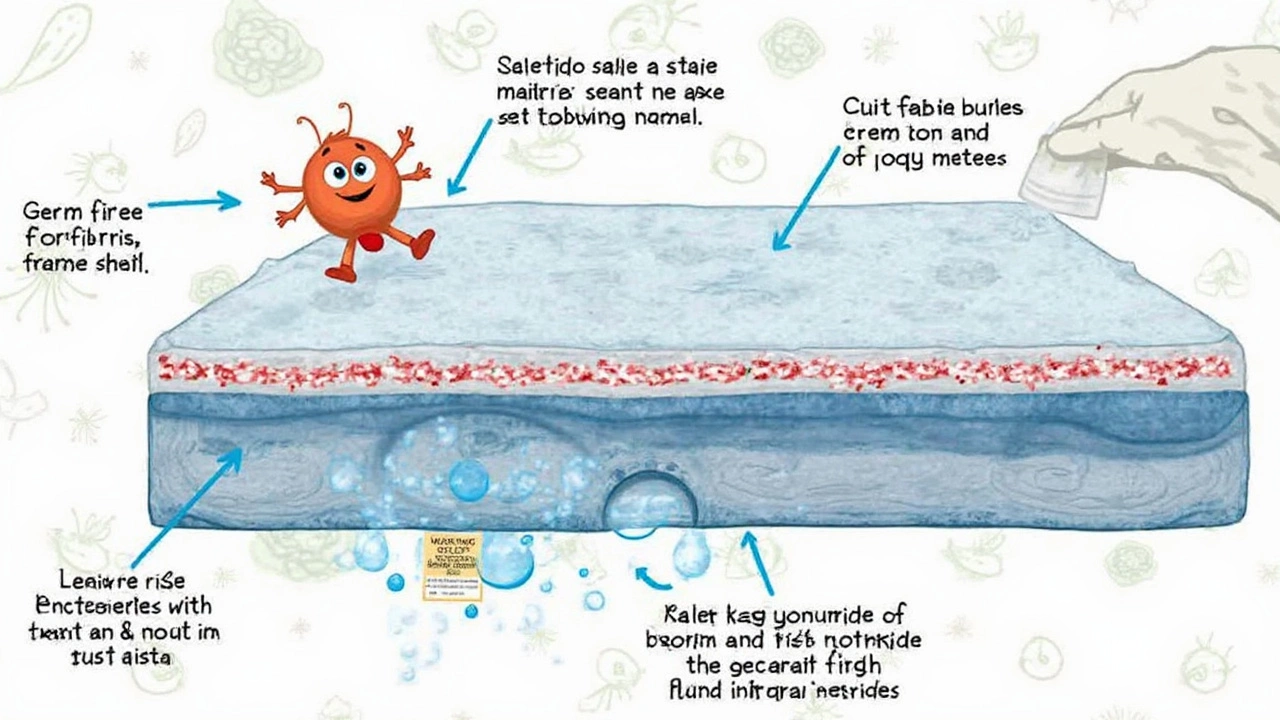
Is It Safe for All Mattresses?
If you’re wondering whether hydrogen peroxide is a one-size-fits-all mattress cleaner, here’s the deal: not every mattress can handle it. Sure, it kicks butt at killing germs and busting stains, but it can also mess up certain materials if you go in blindly. I learned the hard way when Damon spilled grape juice on his memory foam mattress and we tried a heavy hand with peroxide. Suddenly, those purple splotches were surrounded by brand new white rings. Yikes.
Different mattresses use different covers and fillings. Some have natural fabrics like cotton, while others use synthetics or special coatings. Here’s what matters:
- Hydrogen peroxide is a bleaching agent—that means it might fade colors or leave behind light spots, especially on darker mattress fabrics.
- Memory foam and latex mattresses can soak up liquid fast, and since peroxide breaks down into water and oxygen, it can go deep into the material and cause yellowing or even slow breakdown over time.
- Pillow-top and hybrid mattresses with complex layers are tricky; liquids can get trapped inside, which leads to mold or funky smells if they don’t dry out fully.
For most basic innerspring mattresses with a white cotton or polyester cover, small dabs of hydrogen peroxide can zap fresh stains. Just don’t go overboard—scrubbing or pouring it on will only turn a tiny problem into a big faded patch.
Here’s a quick look at how different mattress types react to hydrogen peroxide:
| Mattress Type | Peroxide Reaction | Risk Level |
|---|---|---|
| Innerspring (cotton/poly cover) | Usually safe, small spot cleaning only | Low |
| Memory Foam | Can bleach, weaken foam, cause odor | High |
| Latex | Might discolor or damage latex | High |
| Pillow-top/Hybrid | Liquid can seep into layers | Moderate to High |
| Dark or colored cover | May bleach or fade fabric | High |
Bottom line? Always spot test an out-of-the-way section with a cotton swab before going big. Some mattress brands (like Tempur-Pedic) even say straight up to avoid peroxide altogether, or you’ll risk the warranty. If you’re not sure what’s in your bed, check the care label or the manufacturer’s cleaning tips online. And hey, when in doubt, try a less harsh cleaner—your future self will thank you.
Step-by-step: How to Use Hydrogen Peroxide on Your Mattress
Before you grab your cleaning supplies, here’s one key thing: always spot-test hydrogen peroxide on a hidden part of your mattress. Some fabrics or dyes can react badly and you don’t want a pale blotch in the middle of your bed. Here’s how everyone (including folks with tough kids like Damon and Callum) can make mattress stains history without much stress.
- Get Your Stuff Together: You’ll need 3% hydrogen peroxide (the regular stuff from the drugstore, nothing stronger), a spray bottle, a clean cloth or towel, some baking soda, and a vacuum. Want extra cleaning kick? Mix in a squirt of liquid dish soap for greasy stains.
- Vacuum First: Run the vacuum over the mattress to pick up crumbs, pet hair (if you’ve got a Sable like me), and other debris. This way you’re not rubbing gunk in deeper.
- Mix & Apply: Pour hydrogen peroxide into a spray bottle. Some people add a teaspoon of baking soda and a drop or two of dish soap to help lift stubborn stains. Shake gently. Spray only enough to lightly dampen the stained area—don’t soak the mattress.
- Let It Bubble: Give it about 5–10 minutes. You’ll probably see some bubbling as the peroxide eats through organic stains. That’s normal and means it’s working.
- Blot—Don’t Rub: Grab a clean, dry cloth and gently blot the area. Rubbing just spreads the mess or damages the fabric. Repeat spray-and-blot if the stain sticks around.
- Baking Soda Finish: If things still smell funky, sprinkle dry baking soda over the spot after cleaning. Let it sit for a few hours (or until the kids forget it’s there and want their beds back), then vacuum it up.
- Let It Air Dry: Make sure the mattress is dry before putting sheets back. Open a window, use a fan, or just wait for a couple hours.
If you're wondering about numbers, studies show hydrogen peroxide (at 3% concentration) kills up to 99% of common bacteria after a few minutes of contact. That’s a solid bonus for folks who worry about germs as well as stains.
| Step | Key Detail | Why It Matters |
|---|---|---|
| Spot Test | Try peroxide on hidden area | Avoids bleaching or damage |
| Don’t Soak | Spray lightly only | Minimizes mold or fabric damage |
| Use 3% Solution | No industrial-grade stuff | 3% is safe, works for home cleaning |
| Dry Well | Let air dry fully | Keeps your bed from smelling musty |
If you follow these steps, your mattress will look and smell fresher, with less risk of fading or ruining the fabric. If you have memory foam, use less liquid—those types soak up fluids like a sponge and are slow to dry. No one wants a soggy bed.
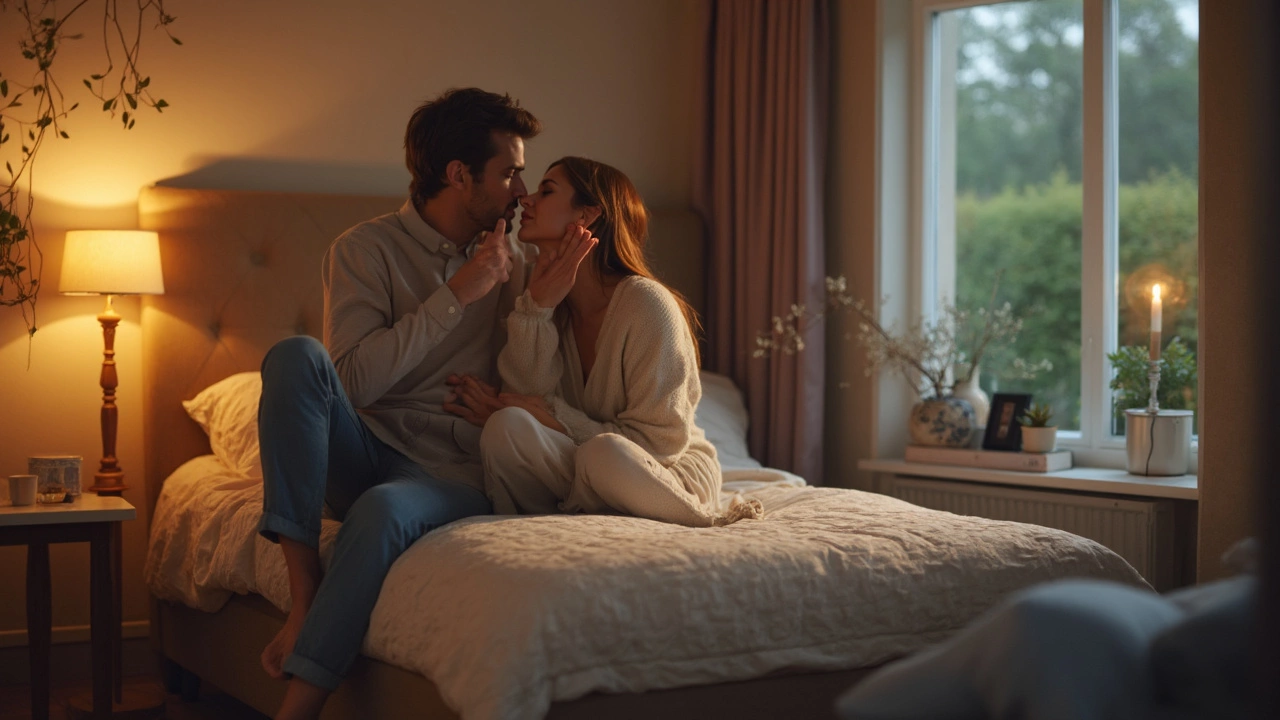
Smart Tips to Keep Your Mattress Clean
When life happens—kids climb in after muddy soccer practice, or your dog Sable sneaks up after a walk—your mattress sees it all. But you can dodge a lot of stains and smells with a few easy habits. It’s way easier to stay on top of things than to fix a mattress disaster later.
- Hydrogen peroxide is handy for spot cleaning, but don’t go overboard. Only use it on fresh stains and always patch test first. For blood, sweat, or urine, dilute the peroxide with water (about half and half) and dab, don’t soak.
- Vacuum your mattress every month. A quick once-over grabs dust, dead skin, and pet hair, which helps with allergies and keeps the surface fresh. If you’ve got a handheld vacuum or upholstery tool, even better.
- Use a mattress protector. The waterproof kind is a game-changer. It blocks spills, sweat, and even dust mites, making deep cleaning way less stressful.
- Let your mattress breathe. Pull off sheets on laundry day and open a window. Sunlight knocks down bacteria and dries out any sneaky moisture that causes mold or musty smells.
- Treat stains ASAP. The longer you wait, the harder they get. For anything weird or persistent, a mix of mild dish soap and water can usually do the trick. Save the tough stuff, like enzyme cleaners, for things like pet accidents.
- Don’t forget to flip or rotate your mattress every few months. This helps it wear evenly and keeps lumps and dips from forming where you sleep the most.
These moves can help your mattress last longer and make your bedroom feel fresher—especially handy when you've got kids and a curious dog running around. And hey, you spend about a third of your life on that bed. Might as well treat it right.

